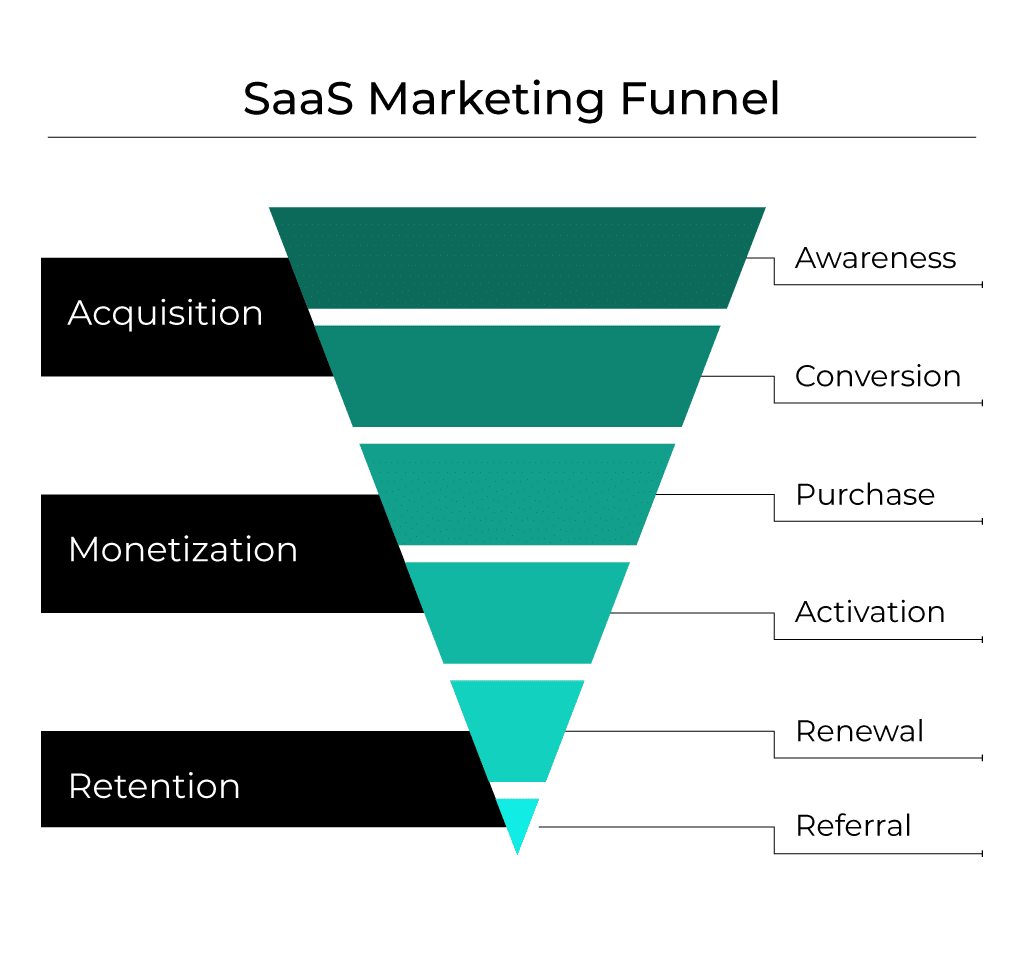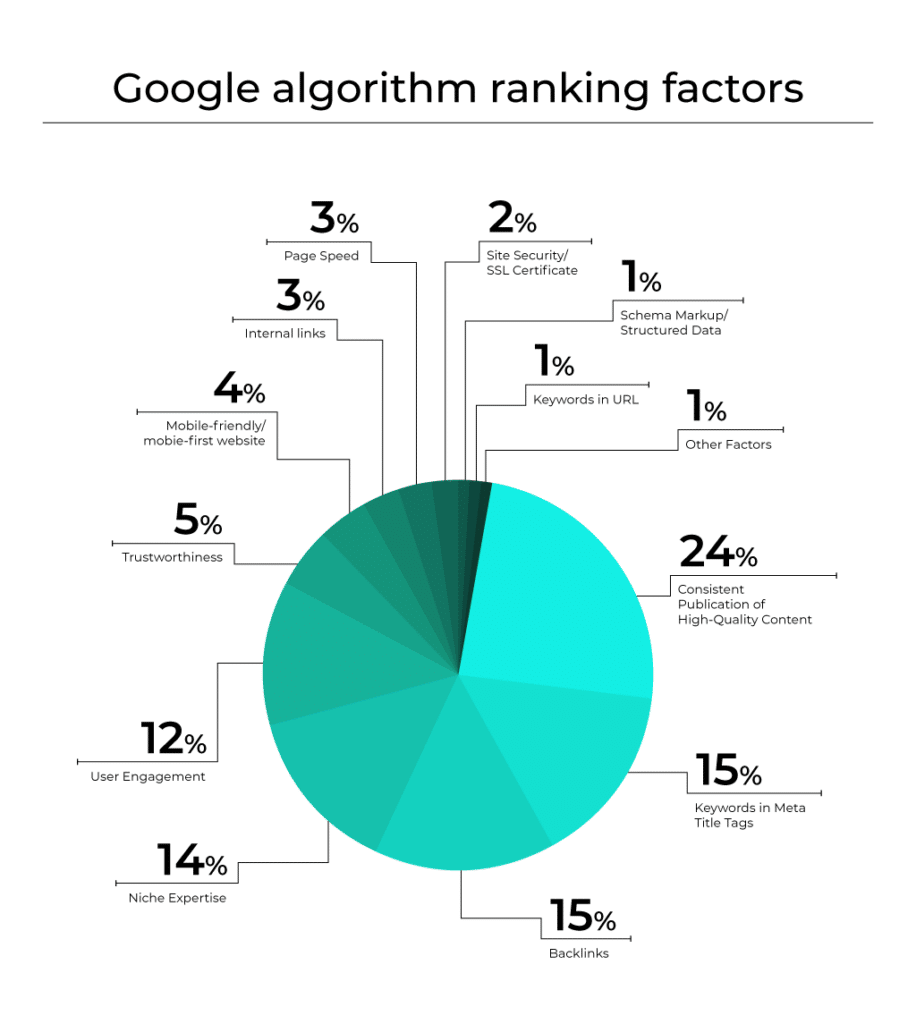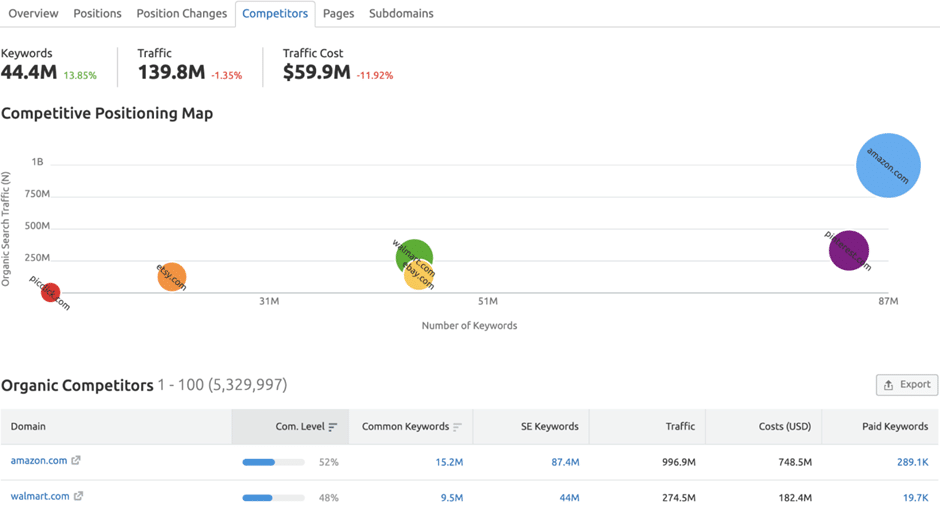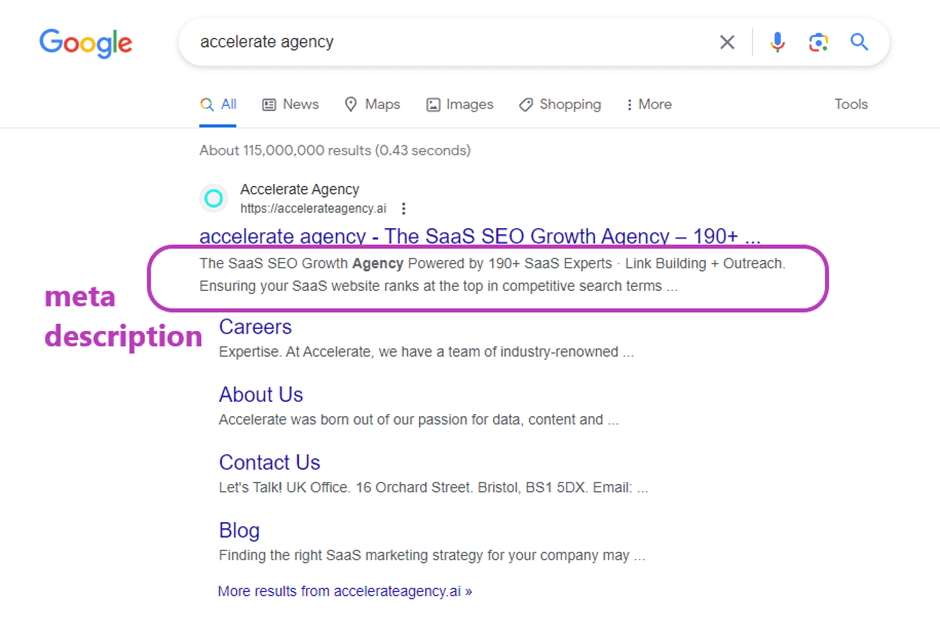SaaS SEO Guide
Crafting impactful SaaS SEO content: A complete guide
Book a FREE SEO Strategy Consultation >
Further Reading:
- SaaS SEO Strategy
- SaaS SEO Checklist
- SaaS Technical SEO
- SaaS SEO Audit
- SaaS Keyword Research
- SaaS SEO Content
- SaaS SEO Copywriting
- E-A-T for SaaS
- Enterprise SaaS SEO
- SaaS SEO Metrics and KPI's
- SaaS SEO Attribution
- VOIP and Telecommunications SEO Strategy
- SaaS Link Building
- Payroll and Finance SaaS SEO
- SaaS SEO Agency
- SaaS Link Building Agency
Creating effective SaaS SEO content can sometimes seem to be a tricky challenge. So, we wanted to demystify the process and explain, in simple terms, how to make it work.
This guide explores SaaS SEO content from a number of directions. First, it looks at why it has a slightly different focus from other content. It then goes on to examine the practicalities of producing this kind of content, and gives a few best practices for you to follow when creating it.
Understanding SaaS SEO content
When you’re building a SaaS SEO strategy for your business, it’s vital to grasp why SaaS SEO content has to be different from other types of content.
What kind of content works particularly well for SaaS companies? Well, this is mostly determined by the way the SaaS field works.
The crucial elements you need to keep in mind here include:
- SaaS sales cycles are long: Compared to other industries like ecommerce, the SaaS sector attracts clients who take a long time over purchase decisions. After all, these are B2B customers who won’t be impulse buyers. It’s likely that many individuals will be involved at each stage of the decision process.
That means you need to nurture your leads carefully through the sales funnel. As a result, SEO content for SaaS companies needs to align with each stage of the customer journey. Every step of the way, your messaging has to address the specific concerns and questions your target clients have at different points.
- Complexity of your product: Many SaaS products have technical features whose value can only be truly appreciated if you have a good understanding of the product. It’s a completely different situation from trying to sell someone a pair of shoes, for instance.
You might think that means your content should go hard on explaining all the technical details. But be careful with that. The fact is that SEO content for SaaS companies needs to strike a tricky balance. Sure, you can provide information about the product’s features and benefits, but your content should also remain accessible to a non-technical audience.
- Showcase your offering: If you make a demo version of your offering available, don’t forget to mention that in your content. It can make all the difference when it comes to encouraging potential customers to take that next step down the sales funnel.

One area where you should be a little careful is pricing. If you’re in a growth phase and mostly targeting SMBs, you may be trying to minimize your cost per sale. In that case, it makes sense to include clear details of how much your plans cost and what value each one provides. Many small businesses won’t pick up the phone to get in touch with you unless they see these details on your site.
However, once your business gets to the point where you’re targeting large corporations, you should be focusing on developing a dedicated enterprise SaaS strategy.
At this stage, you could well be leaving money on the table by automatically capping your pricing. So bear in mind that when it comes to pricing-related content, you need to think strategically.
- Focus on customer retention: Some companies make the mistake of focusing their SEO content purely on attracting new clients. However, to achieve long-term success, SaaS companies rely on customer retention and renewals. There’s no point continuing to fill the bathtub if the drain stopper’s open, right?
Your content needs to provide for your existing customers, too, in other words. This means aiming some toward offering support, telling customer success stories, and ongoing reminders of the value of your product. The goal is to keep your clients engaged so that they’ll be happy to stick with your service.
Putting all this together, it’s helpful to think about SaaS SEO content as falling into two distinct categories:
1. Awareness content
This is any type of SEO content that draws attention to your product. This should include some long-form blog posts that give a useful overview of topics related to the field your business operates in. The idea is to cast your net wide and attract a large number of visitors interested in learning more about your area.
Among this influx will be a few who are potentially interested in buying your service. But in addition, doing this means Google will notice that your site is suddenly a go-to for anyone interested in content about your particular niche.
Your domain authority will rise, and this will help you rank better all round. You’re playing a long game here, and awareness content helps.
2. Expertise-driven content
Expertise-driven content is more specifically about your product and related topics. While awareness content is created to attract as many visitors as possible, expertise-driven content demonstrates the thought leadership you bring to your space.
It won’t attract as many visitors, but the ones it does attract will be more likely to convert.

This kind of content needs to provide value that readers won’t find elsewhere. It should answer the kinds of questions that your fellow professionals are struggling with.
In other words, it needs to be genuinely insightful and well-constructed. Putting this kind of content on your site will generate useful backlinks that will give it a competitive edge.
It’s crucial not to overlook the importance of E-A-T for SaaS companies trying to climb the rankings on SERPs. E-A-T stands for Expertise, Authoritativeness, and Trustworthiness, which are key determining factors in Google’s search rankings. Together, these should be a primary goal for your SaaS SEO content creation process.
How to write SEO content for your SaaS business
So much for the theory; what about the practice? How do you go about creating excellent SaaS content that delivers for your business?
Let’s break this down into its constituent parts:
1. Written content basics
You hear a lot about how content needs to be insightful, engaging, and well written. Actually putting that into action is not always straightforward to achieve.
In particular, many companies in a technical industry like SaaS run into one specific problem: Their technical experts understand the product well, but don’t know how to write to engage an audience.
Content writing is a skill. Anyone can put together a thousand words on a topic that interests them, but getting the reader interested is another matter. Here are a few tips for how to do it:
- Break up the text into readable chunks: Huge paragraphs twenty lines long are an absolute no-no. Most people don’t like reading big walls of text, no matter how well written they are.
- Use lots of subheadings and formatting: This organizes your content into a more readable form and also helps Google understand your pages more accurately. Bulleted lists are your friends.
- Imagine you’re talking to someone: You’re not writing a university essay or a company report. The prose should be professional, of course, but it shouldn’t be overly formal.
For example, you’ll notice that this article uses contractions like “you’ll” and “isn’t”. That’s just one way of making a piece of writing more conversational in tone. - Article length: Consider word count as part of your SaaS content strategy. Most blog articles are between 1,000 and 3,000 words in length, depending on how detailed the treatment of the topic is.Be careful not to fall into the trap of adding word count just for the sake of writing a longer article than a competitor. A shorter piece done well will work better than a longer one that’s stuffed with unnecessary padding.

- Add value: Make sure your content delivers actionable insights and advice. Include lists of practical tips (like this one).
The good news is that you don’t have to do the writing yourself, of course. There are SaaS SEO copywriting experts who specialize in producing exactly the kind of content you need. So consider outsourcing this if you don’t have in-house writers.
SaaS content writing is as much of a science as an art; there are important technical elements to master. First up: Keywords and how to handle them.
2. Researching and incorporating keywords
The first stage is to discover what keywords your target customers are actually searching for. There are plenty of tools available to help you do this, like Google Keyword Planner, SEMrush, or Ahrefs.
These will help you find keywords that are relevant to your SaaS product or service. Focus on long-tail keywords that have a moderate search volume and low competition. By doing that, you’ll be unearthing relevant keywords that you have a better chance of ranking for.
The way to approach this is to think about which problems your product can solve for your clients.
This might mean:
- Challenges that you’re positioning your product to address
- Related issues experienced by a similar target audience
- Questions that you receive from existing clients
Make a comprehensive list of these, then turn them into questions. When you plug these into most keyword research tools, they’ll be able to generate a list of related keywords. From these, you select the ones you think you’ll be able to rank for and focus on them.
Competitor analysis
A critical part of keyword research is checking out the competition. Which keywords are their pages ranking for, and how can you get ahead?
You can begin to get a clue to this by using your keyword research tool to show you which of your competitors’ pages are bringing in the most traffic. That’s useful information, because it demonstrates what people are interested in.

If you find that specific blog pages are drawing a huge crowd, that’s a terrific tip-off. Examine each page closely and try to figure out why they’re so popular. Most likely, they’re well-optimized pages that are hitting a sweet spot in terms of the content quality and the subject matter.
Could you write an article on a similar topic and put it on your blog? After all, if your competitor’s articles on the topic are doing well, that proves there’s an interest. There’s no reason why you shouldn’t get in on the action as well.
Keywords and the sales funnel
Don’t forget to consider the sales funnel. This essentially means targeting different keywords on different pages, depending on what type of content you have on each.
Top-of-funnel awareness content like general blog articles should be integrating keywords that people are likely to search for when they’re first looking for your kind of SaaS product.
On the other hand, as your prospect moves through the funnel, the keywords you target should change. At this point, the purchase intent is there and they’re narrowing down their options. So now is when you should be aiming for peak visibility for your product and feature pages.
And you’ll choose different keywords again for your bottom-of funnel pages like your pricing page. At this stage, you’re in the running for the contract but could still lose out to a competitor.
One good idea is to include competitor comparison pages on your site that demonstrate why the potential client should choose your service. Ideally, you can get these to rank for search terms such as:
- [your company] vs [competitor]
- [your company] and [competitor] pricing
- [your company] vs. [competitor] integrations
If you manage that, you’ll be grabbing the potential client’s attention before your competitor gets a look-in.
3. On-page optimization
You’ve done your keyword research and you’ve written the content. It’s full of useful advice and expert knowledge, and it showcases your product perfectly. Job done, right?
Not quite.
On-page optimization is all about tweaking your pages to make them search engine-friendly. It brings all the other elements together and has a huge impact on how well your content performs in organic search. Here are a few of the most important aspects to get right:
- Page titles and meta descriptions: It’s vital to include your target keyword in the page title and meta description. Your meta descriptions should be both concise (for technical reasons) and compelling (to encourage people to click through to your site).

- Don’t neglect the URLs: The URLs should also include your target keyword. Keep them short, descriptive, and easy to read.
- Image optimization: It’s not just the text on your page that needs to be optimized. Give images a boost by adding alt text and appropriately descriptive file names. Make sure the file sizes of images are not too big, because that can affect page load speed.
- Internal and external linking: Include relevant internal links to other pages on your website. This helps out when Google is indexing your page, because it makes the structure of your site as a whole more cohesive. Link to authoritative external sources to support your content and enhance your site’s credibility.
Best practices for outstanding SaaS SEO content
When you’re developing SEO content for SaaS businesses, there are a few best practices to bear in mind:
Use a checklist to organize the process
Working to a SaaS SEO checklist will keep you focused. It should include entries for all the essentials: High-quality content, internal links and backlinks, competitor analysis, on-site optimization.
Define your target buyer personas
Understand your target audience and create buyer personas. These are imaginary embodiments of your target audience, like avatars of your ideal client.
The more specific you are about who they are, the easier it’ll be to understand their pain points, challenges, and goals. In turn, that helps you speak to your audience directly when crafting your content.
Pay attention to technical SEO
Even the best content can stumble if the website it appears on isn’t performing well. Optimizing page load speed is crucial, as is your site being responsive and mobile-friendly. It all helps improve the user experience.
Implement a consistent posting schedule
Content creation for SaaS is an ongoing project. Develop a content calendar and publish high-quality content regularly to maintain your position in the organic search rankings.

You’ll also need to update and repurpose existing content to keep it relevant. It’s a good plan to carry out content audits from time to time so you can fix any problems if they arise.
Incorporate your unique value proposition
Your UVP should be uppermost in your mind when developing your content. Look for opportunities to build trust with the reader. Highlight what it is that makes your solution stand out from the competition, and emphasize all the benefits clients can expect when they sign up.
Level up your SaaS business with SEO-driven content
Paying closer attention to your SEO content strategy can make all the difference. When you’re aiming to take that next step to greater success, fine-tuning your SaaS SEO content should be top of the to-do list.
Here at accelerate agency, we have years of experience at helping SaaS businesses just like yours achieve results they had no idea were possible. With the right content and SEO strategy in place, you too can level up your business and take your rightful place among the SaaS superstars.